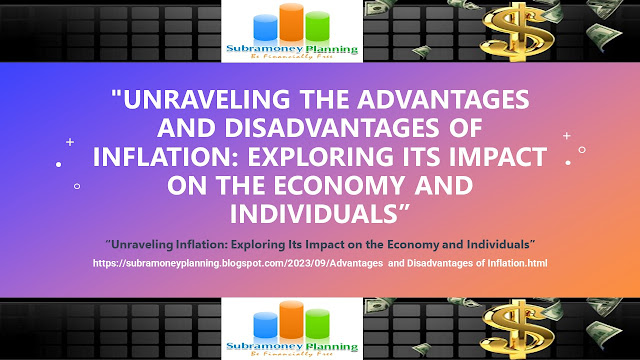Commodity money is a significant milestone in the evolution of money. It refers to the use of valuable goods with intrinsic worth as a medium of exchange. In ancient civilizations, precious metals like gold, silver, and even seashells served as commodity money. In this blog post, we will explore the time span and context of commodity money, provide examples of its usage in ancient civilizations, discuss its features, and examine the pros and cons associated with this form of currency.
 |
Commodity Money: Ancient Civilizations Using
Precious Metals as Currency Subramoneyplanning |
Time span and context: Commodity money emerged in various civilizations across different time periods. Its usage can be traced back to ancient Mesopotamia, Egypt, Greece, and Rome, and it continued to be employed in different forms until the development of standardized currency systems. Commodity money was particularly prevalent during the periods when trade and commerce flourished.
Example: Ancient civilizations using precious metals as currency: One of the most notable examples of commodity money is the use of gold and silver by ancient civilizations. For instance, in ancient Egypt, gold and silver were widely used as a medium of exchange. The Egyptian economy heavily relied on trade, and these precious metals were valued for their rarity, durability, and aesthetic appeal. Similarly, ancient Greek and Roman civilizations also adopted gold and silver coins as a means of conducting commercial transactions.
Features of commodity money:
1. Intrinsic value: Commodity money possesses inherent value derived from the material from which it is made. Precious metals, such as gold and silver, have historically been valued for their scarcity, durability, and aesthetic appeal.
2. Widespread acceptance: Commodity money gained universal acceptance within a society or region due to its recognized value. People were willing to exchange goods and services for these valuable metals.
3. Divisibility: Commodity money could be divided into smaller units, facilitating transactions of varying sizes. Coins made from precious metals were minted in different denominations to accommodate different exchange values.
4. Portability: Precious metals, especially in the form of coins, were relatively portable and easy to carry, making them convenient for trade and commerce.
Pros and cons of commodity money:
Pros:
1. Inherent value: Commodity money derives its value from the precious metal itself, providing a stable store of value over time. It is not subject to fluctuations in the economy or government policies.
2. Universal acceptance: Commodity money was universally accepted within a society or region, allowing for seamless transactions and trade across different communities.
3. Durability: Precious metals like gold and silver are highly durable, ensuring that the commodity money retains its value over extended periods.
Cons:
1. Practicality and logistics: Carrying large quantities of precious metals for trade could be cumbersome and risky, especially during long-distance travel or in areas prone to theft.
2. Lack of uniformity: Commodity money lacks the standardized value that is found in modern currency. The subjective valuation of different commodities could lead to difficulties in determining fair exchange rates.
3. Inefficiency in large-scale economies: As economies grew larger and more complex, the use of commodity money became increasingly impractical. The limitations of physically exchanging precious metals hindered the efficiency of trade and commerce.
Example: Ancient civilizations using gold and silver as commodity money
For:
1. Stability of Value: Gold and silver have been valued throughout history for their scarcity and durability. They hold their value over time, making them reliable forms of currency.
2. Widespread Acceptance: Precious metals like gold and silver were universally recognized and accepted within ancient civilizations. They were trusted mediums of exchange, facilitating trade and commerce.
3. Store of Value: Commodity money, such as gold and silver coins, allowed individuals to store their wealth in a tangible and portable form. They could be easily saved and accumulated over time.
Against:
1. Lack of Divisibility: Precious metals in their raw form could be challenging to divide into smaller units for transactions of lesser value. This could lead to difficulties in conducting precise exchanges.
2. Inefficiency in Large-Scale Transactions: As economies grew and trade expanded, the limitations of physically exchanging precious metals became more apparent. Carrying large quantities of gold or silver for significant transactions became impractical and risky.
3. Subjective Valuation: The value of precious metals varied based on factors such as purity, weight, and scarcity. Determining fair exchange rates could be subjective and open to negotiation, leading to potential conflicts and disputes.
4. Vulnerability to Theft: The use of commodity money made individuals more susceptible to theft and robbery. Carrying valuable metals increased the risk of being targeted by thieves.
Commodity money marked a significant advancement in the evolution of money, as it introduced the use of valuable goods with intrinsic worth as a medium of exchange. Ancient civilizations relied on precious metals like gold and silver to facilitate trade and commerce. While commodity money offered stability and universal acceptance, it faced challenges in terms of practicality, logistics, and lack of standardized value. Nonetheless, commodity money laid the foundation for the development of more sophisticated monetary systems and paved the way for the emergence of representative and fiat money. Understanding the features and pros and cons of commodity money provides valuable insights into the history and evolution of currency and its role in facilitating economic transactions.











%20Answering%20the%20Six%20WH%20Questions%20of%20Portfolio%20Management.jpg)


